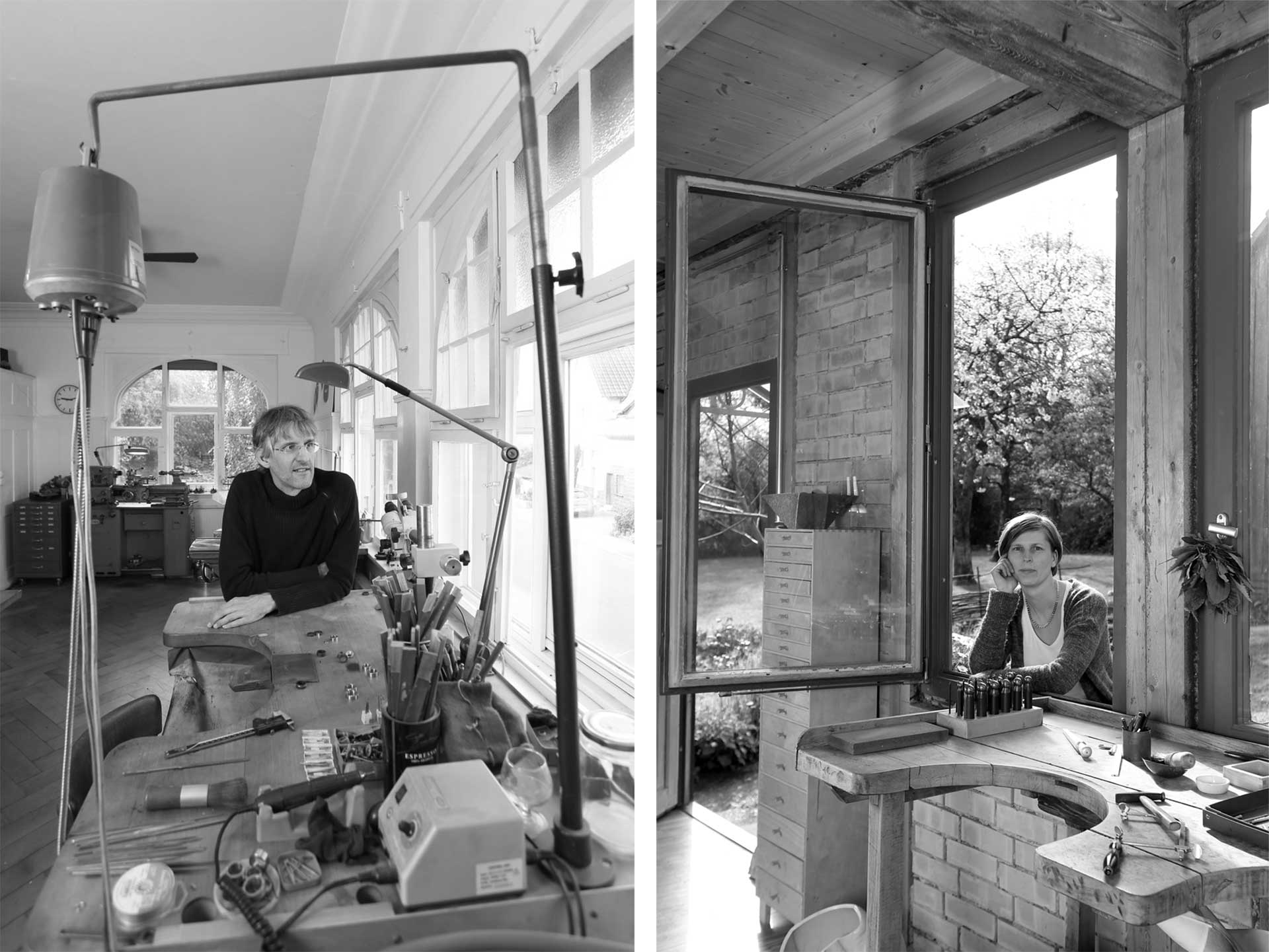The first manufactory for pocket watches, jewelry and fine steel merchandise was established in Pforzheim under the initiative of Margrave Karl Friedrich in 1767. This marked the beginning of the city’s progress toward becoming a Mecca for jewelry and timepieces. In 1913, approximately half of the city’s 75,000 residents were employed in the jewelry and watch industry. Pforzheim was almost completely destroyed during the Second World War. It took until 1953 before the city at the edge of the Black Forest again became the world’s largest manufacturer of jewelry and silver merchandise. Although nearly the entire watchmaking industry and a large percentage of the jewelry companies had been compelled to close their doors forever by the turn of millennium, Pforzheim is still formatively shaped by jewelry in 2017, when the city celebrates its 250th anniversary. The “Gold City” has an impressive jewelry museum with one of the world’s most important collections. The school for goldsmiths and watchmakers, as well as the academy for design, are important educational institutions that train goldsmiths and designers, many of whom remain in Pforzheim afterwards because the city offers them an optimal infrastructure for their métiers.

Sam Tho Duong, necklace Bubble. Fine silver granules, 935 silver, nylon.

Stefanie Prießnitz, pearl silk necklace. Pearl silk and freshwater pearls.

Claudia Geiger, collier and three-row bracelet Wandelbar. Freshwater pearls and stainless steel.
Alongside a few remaining brands such as Wellendorff, Gellner, Jörg Heinz and IsabelleFa, the contemporary culture of jewelry is also represented in and around Pforzheim by designers such as Oliver Schmidt, Eva Strepp, Stefanie Priessnitz and Claudia Geiger and by artists such as Iris Bodemer and Sam Tho Duong. But how do the perspectives look for contemporary jewelry of individual workshops? There are increasingly many “jewelry design” labels which sell mass-produced wares at far lower prices than are demanded by more sophisticated designers and manufactories Claudia Geiger says. “This makes it difficult for original items, but many customers are ultimately convinced by styling that has taken every detail into account, by superior craftsmanship and by authenticity.” The challenge for the future will be to set oneself clearly apart from cheap suppliers. To continue to lure customers into jewelry shops, the specialized trade will need to work on its sales-strategic creativity and on new concepts. Claudia Geiger believes that e-commerce isn’t really significant for artistically designed jewelry, although she is aware that it is indispensable to be present on platforms with outstanding assortments. Further information about the anniversary festival in 2017 can be found at goldstadt250.de.
On the occasion of the 250th anniversary, jewelry designer Stefanie Prießnitz and photographer Sebastian Seibel portrayed 26 jewelry makers in and around Pforzheim in their workshops and studios. From March 16, 2017, the 90 x 60 cm sized portraits will be presented at “Schmuckwelten Pforzheim”. The exhibition runs until April 29, 2017.

Patrick Malotki and Stefanie Prießnitz in their working environment.
- —
- Link